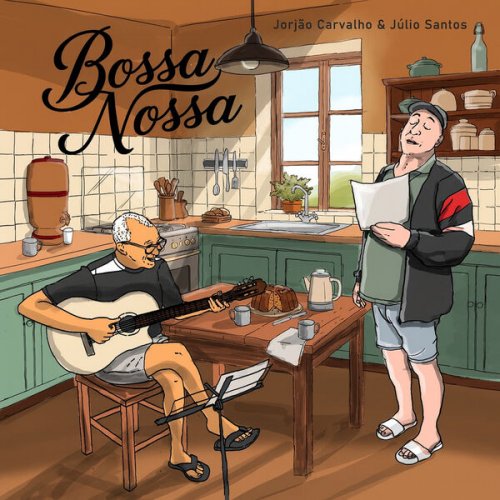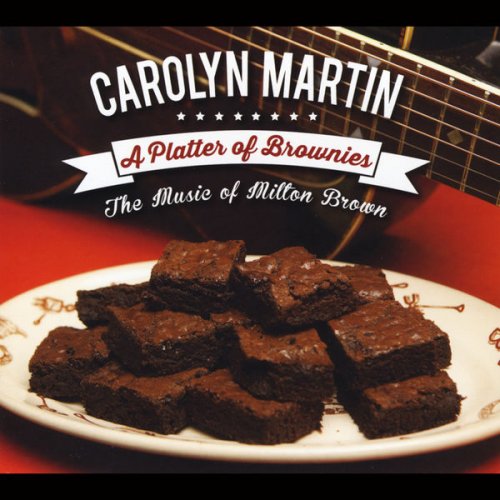Billy Strayhorn - Day Dream: Complete 1945-1961 Sessions as a Leader (2015)
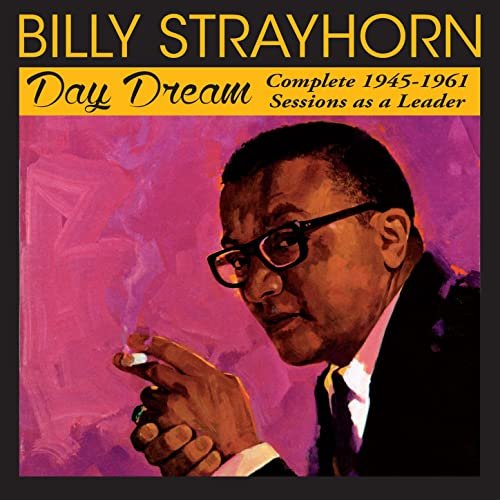
Artist: Billy Strayhorn
Title: Day Dream: Complete 1945-1961 Sessions as a Leader
Year Of Release: 2015
Label: Classic Standard
Genre: Jazz, Piano Jazz
Quality: 320 kbps | FLAC (tracks)
Total Time: 02:37:56
Total Size: 376 mb | 610 mb
WebSite: Album Preview
Tracklist:Title: Day Dream: Complete 1945-1961 Sessions as a Leader
Year Of Release: 2015
Label: Classic Standard
Genre: Jazz, Piano Jazz
Quality: 320 kbps | FLAC (tracks)
Total Time: 02:37:56
Total Size: 376 mb | 610 mb
WebSite: Album Preview
01 - Lush Life (feat. The Paris Blue Notes)
02 - Just a Sittin' and a Rockin' (feat. The Paris Blue Notes)
03 - Passion Flower (feat. The Paris Blue Notes)
04 - Take the -A- Train (feat. The Paris Blue Notes)
05 - Strange Feeling (feat. The Paris Blue Notes)
06 - Day Dream (feat. The Paris Blue Notes)
07 - Chelsea Bridge (feat. The Paris Blue Notes)
08 - Multi-Colored Blue (feat. The Paris Blue Notes)
09 - Something to Live For (feat. The Paris Blue Notes)
10 - A Flower Is a Lovesome Thing (feat. The Paris Blue Notes)
11 - Cue's Blue Now (feat. Johnny Hodges)
12 - Gone with the Wind (feat. Johnny Hodges)
13 - Cherry (feat. Johnny Hodges)
14 - Watch Your Cue (feat. Johnny Hodges)
15 - You Brought a New Kind of Love to Me (feat. Johnny Hodges)
16 - When I Dream of You (feat. Johnny Hodges)
17 - Rose Room (feat. Johnny Hodges)
18 - Feather Roll Blues
19 - Halfway to Dawn
20 - Tailspin
21 - Halfway to Dawn
22 - Sono
23 - Frustration
24 - Sono (Alternate Take)
25 - Cotton Tail (feat. Duke Ellington)
26 - C Jam Blues (feat. Duke Ellington)
27 - Flamingo (feat. Duke Ellington)
28 - Bang-Up Blues (feat. Duke Ellington)
29 - Tonk (feat. Duke Ellington)
30 - Johnny Come Lately (feat. Duke Ellington)
31 - In a Blue Summer Garden (feat. Duke Ellington)
32 - Great Times (feat. Duke Ellington)
33 - Perdido (feat. Duke Ellington)
34 - Take the -A- Train (feat. Duke Ellington)
35 - Oscalypso (feat. Duke Ellington)
36 - Blues for Blanton (feat. Duke Ellington)
37 - Tonk (No. 2) [feat. Duke Ellington]
38 - Drawing Room Blues (feat. Duke Ellington)
39 - Tonk (No. 3) [feat. Duke Ellington]
40 - Lush Life (Live at Carnegie Hall 1948) [feat. Kay Davis]
Billy Strayhorn was notoriously reserved in his musical career. He made very few albums under his own name and seemed almost content for Duke Ellington to get the credit for much of their work together. Nonetheless he was not only a marvellous composer and arranger but also a talented pianist, as this double album shows. It contains the first two albums he made under his own name: The Peaceful Side (tracks I/1-10) and Cue for Saxophone (tracks I/11-17), as well as his other recordings as a leader between 1945 and 1961.
They reinforce his reticent image, as he allows most of his fellow musicians to occupy much of the space in the recordings. He was a modest soloist, even in his most celebrated compositions. This tendency is evident in the title of his first album, where he is accompanied by strings and cooing vocalists, although he plays alone on such tunes as Chelsea Bridge or just with Michel Gaudry’s bass. All the tracks on The Peaceful Side are gentle, although they prove that Strayhorn was comfortable at the piano and capable of many decorative touches. The slight exception is Take The “A” Train, which becomes positively puckish after a simple introduction.
The album Cue for Saxophone livens up, thanks to four Ellingtonians who play some bluesy arrangements and produce some bluesy solos. The ten-minute Cue’s Blue Now has nice wa-wa trumpet from Shorty Baker, while Gone With The Wind has sublime sax from Johnny Hodges. Russell Procope is outstanding throughout on clarinet. The choice of stalwart old standards like Cherry and Rose Room suggests that Strayhorn was happy to be more extrovert than elsewhere. The ending of Rose Room is positively Dixieland!
The first three tracks of the second CD are unaccompanied performances by Strayhorn, emphasising his delicacy of touch. The next three tracks spotlight the wonderful Harry Carney.
Tracks 7 to 21 on the second CD are the famous piano duets between Stray and the Duke. They begin with a rather shambolic version of Cotton Tail, at a tempo which neither pianist seems comfortable with. The remainder of the duets seem better organised, although it is impossible to tell which man is playing at any one time. I guess that the stabbing notes in a tune like Flamingo are by Ellington. Tonk is the best co-ordinated track, as this was a party piece which the duettists played at social functions. It is a glittering showpiece which shows off the talents of both musicians. Tracks 18 to 21 are not piano duets but the first recordings made by Oscar Pettiford with his cello, plus occasional interpolations by Strayhorn on celeste. The sound is unfortunately distorted.
This set concludes with Kay Davis singing Stray’s Lush Life at Carnegie Hall in 1948. Unfortunately her tuning is not always perfect but she puts the song across with feeling.
They reinforce his reticent image, as he allows most of his fellow musicians to occupy much of the space in the recordings. He was a modest soloist, even in his most celebrated compositions. This tendency is evident in the title of his first album, where he is accompanied by strings and cooing vocalists, although he plays alone on such tunes as Chelsea Bridge or just with Michel Gaudry’s bass. All the tracks on The Peaceful Side are gentle, although they prove that Strayhorn was comfortable at the piano and capable of many decorative touches. The slight exception is Take The “A” Train, which becomes positively puckish after a simple introduction.
The album Cue for Saxophone livens up, thanks to four Ellingtonians who play some bluesy arrangements and produce some bluesy solos. The ten-minute Cue’s Blue Now has nice wa-wa trumpet from Shorty Baker, while Gone With The Wind has sublime sax from Johnny Hodges. Russell Procope is outstanding throughout on clarinet. The choice of stalwart old standards like Cherry and Rose Room suggests that Strayhorn was happy to be more extrovert than elsewhere. The ending of Rose Room is positively Dixieland!
The first three tracks of the second CD are unaccompanied performances by Strayhorn, emphasising his delicacy of touch. The next three tracks spotlight the wonderful Harry Carney.
Tracks 7 to 21 on the second CD are the famous piano duets between Stray and the Duke. They begin with a rather shambolic version of Cotton Tail, at a tempo which neither pianist seems comfortable with. The remainder of the duets seem better organised, although it is impossible to tell which man is playing at any one time. I guess that the stabbing notes in a tune like Flamingo are by Ellington. Tonk is the best co-ordinated track, as this was a party piece which the duettists played at social functions. It is a glittering showpiece which shows off the talents of both musicians. Tracks 18 to 21 are not piano duets but the first recordings made by Oscar Pettiford with his cello, plus occasional interpolations by Strayhorn on celeste. The sound is unfortunately distorted.
This set concludes with Kay Davis singing Stray’s Lush Life at Carnegie Hall in 1948. Unfortunately her tuning is not always perfect but she puts the song across with feeling.
![Tomasz Stanko - Unit (Polish Radio Sessions vol. 2/6) (2025) [Hi-Res] Tomasz Stanko - Unit (Polish Radio Sessions vol. 2/6) (2025) [Hi-Res]](https://www.dibpic.com/uploads/posts/2025-12/1765796826_cover.jpg)
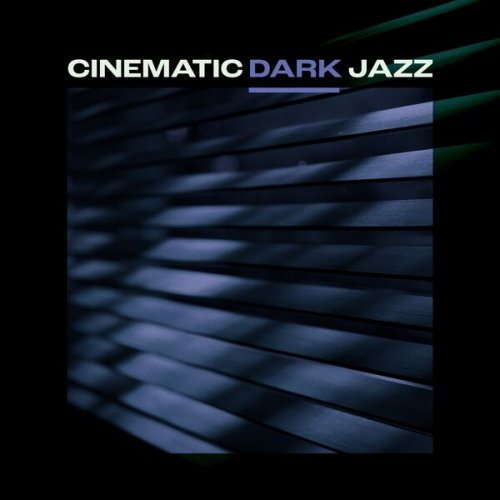
![Tomasz Stańko, Tomasz Szukalski, Dave Holland & Edward Vesala - Balladyna (1976/2025) [Hi-Res] Tomasz Stańko, Tomasz Szukalski, Dave Holland & Edward Vesala - Balladyna (1976/2025) [Hi-Res]](https://www.dibpic.com/uploads/posts/2025-12/1765717548_cover.jpg)

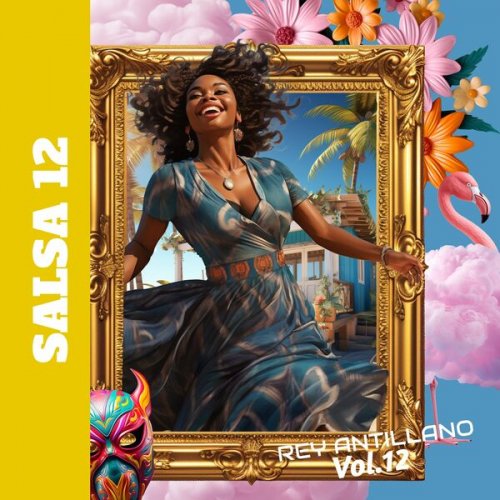
![Tomasz Stańko - Zamek mgieł (Polish Radio Sessions vol. 3/6) (2025) [Hi-Res] Tomasz Stańko - Zamek mgieł (Polish Radio Sessions vol. 3/6) (2025) [Hi-Res]](https://www.dibpic.com/uploads/posts/2025-12/1765795906_cover.jpg)

